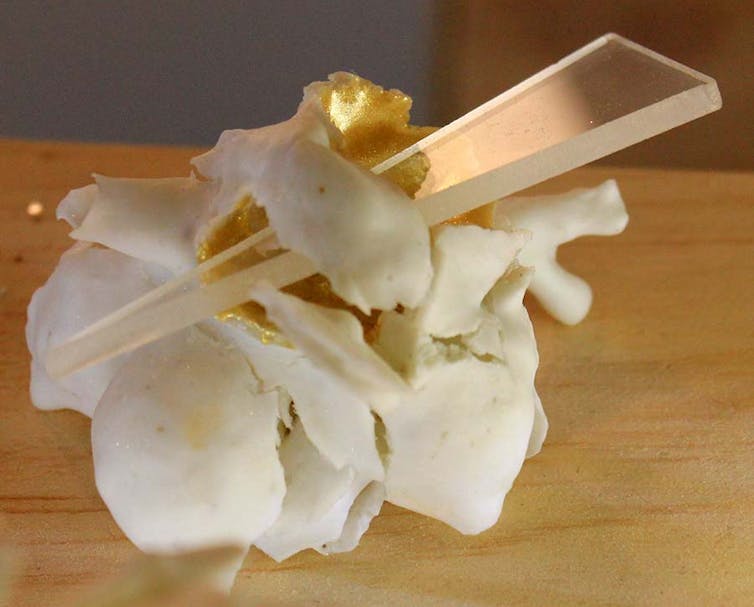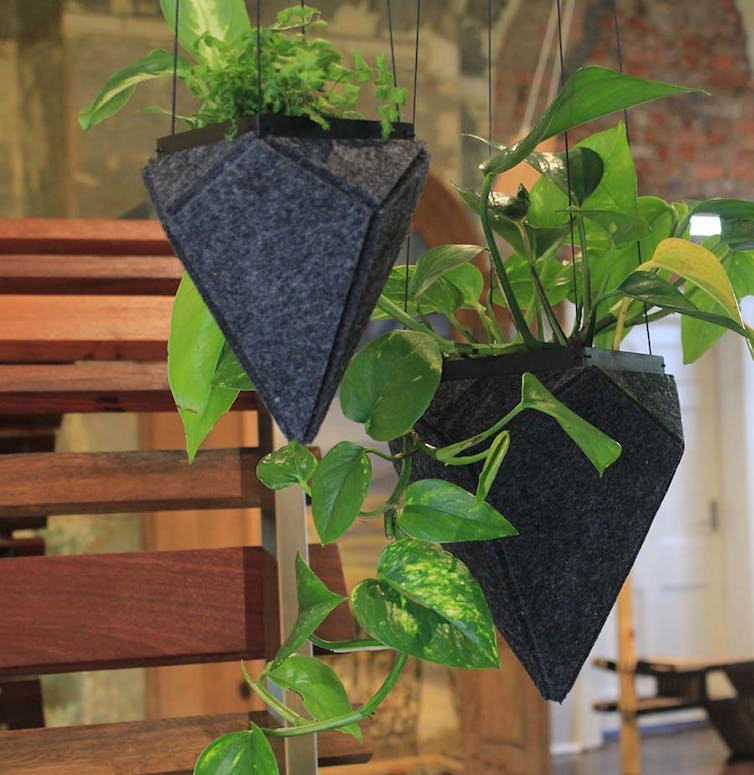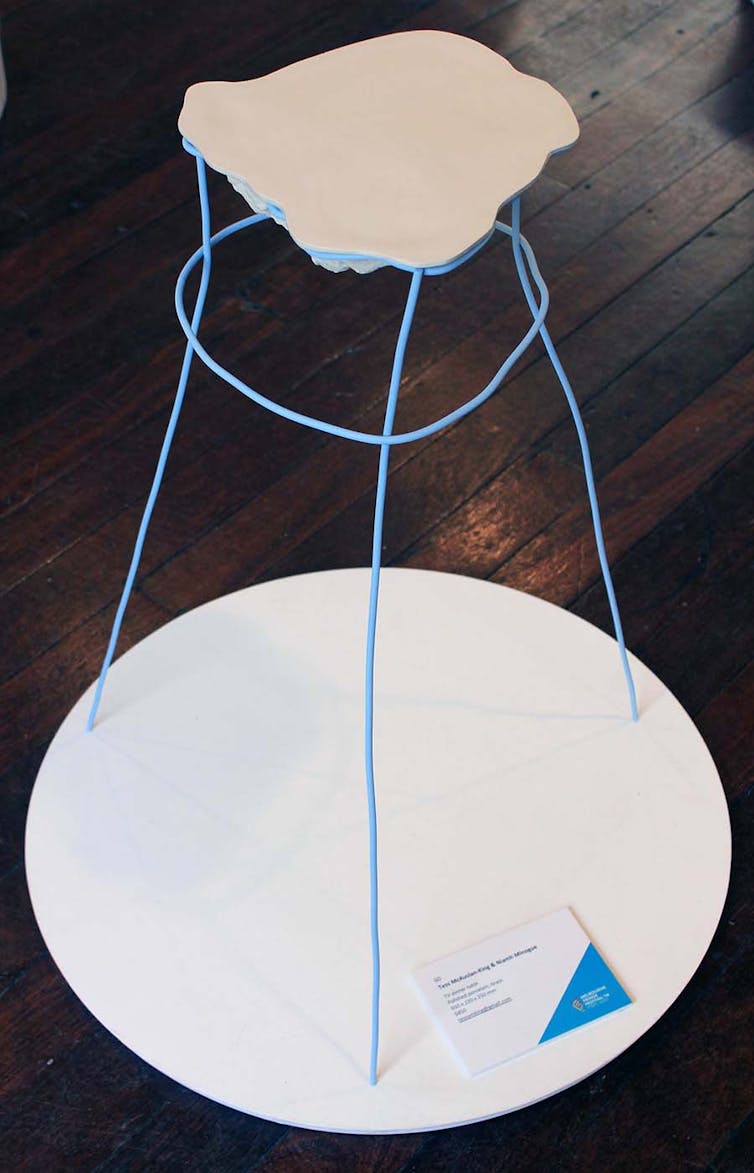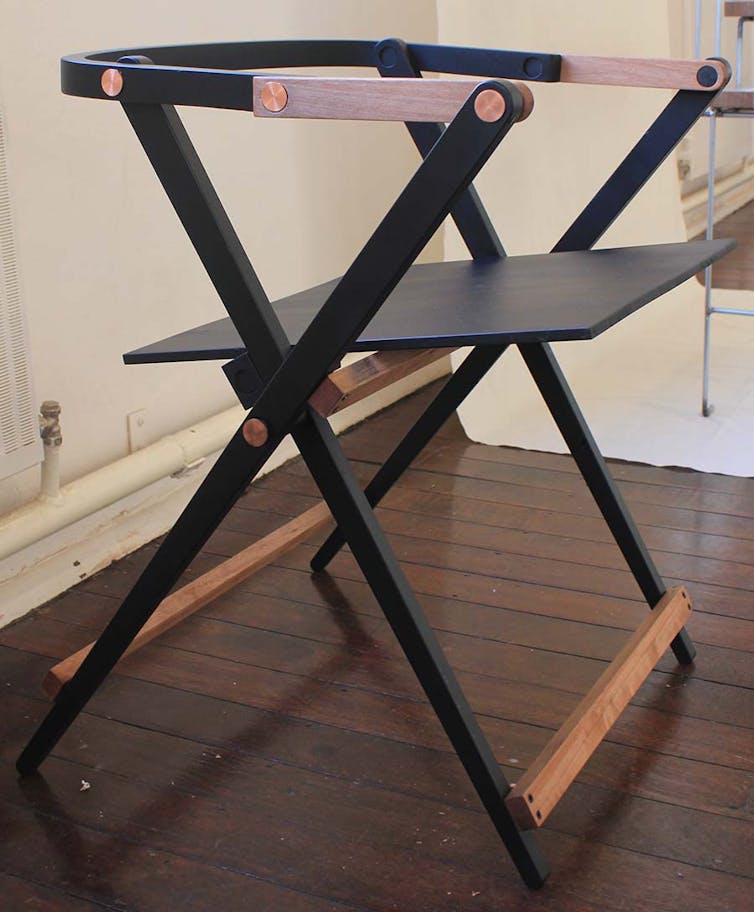Fringe Furniture: the products that help us understand who we are
Every product is a blabbermouth; it has a tendency to answer every question – and then some – Del Coates.
Coates, an American industrial designer and design academic, is right. The processes and outputs of design – or put another way, material culture – reflect our cultural values. The idea of “reading” a product is not novel, of course. And we don’t need to wait until a product has built up a history to analyse what it says about the values of the culture that made it.
In fact, it’s possible to know what a product says about a culture right now if we embrace art historian Ester Pasztory’s idea that everything is a cognitive aid with which a group thinks through and articulates its social, political, ideological or economic values.
Fringe Furniture is an annual fixture on the Melbourne Fringe Festival program, and has been going for 29 years. This year’s theme, Living Traces, speaks to this idea that products can help us understand who we are.
It implies that among designers, makers and larger society, the processes and outputs of design are a current interchange of projection and reflection. In reviewing this year’s exhibition, I was interested to discover what cultural values were held among the collection of furniture, lighting and interior accessories created by this group of designers.
Two values stood out: transparency and maintaining a balance. So let’s look at those.
Transparency
The products reflecting this value were softly spoken, humble products: lights, lounges and chairs with nothing to hide. The idea of transparency as a value was articulated through products that exposed or made features of fastenings, joins or assemblies.
In some, materials were left as they were or only ever so lightly varnished. These designers, who are mostly locals, ensured their designs were honest, authentic and unambiguous. My top three that best articulate this value are pictured below. The first, Max Harper’s Corker pendant lights, won the Sustainable and Waste-wise Design Award, sponsored by the Banyule City Council. Jonathan Ho’s Yi chair won the Most Market Ready Design Award, sponsored by TAIT.

Maintaining a balance between people and the environment
The designers at this year’s exhibition have used materials that either derive from the environment – clays, twigs, leaves – or materials that can negatively affect the environment if they become part of it.
The delicacy of the designs reflecting this value is striking. The designers manage to articulate a great fragility within their products – partly due to the materials they have used, and partly due to the forms themselves – and yet it’s obvious that people have not been absent from the processes needed to make the work possible.
My favourites, which I would have in my home, are pictured below:



“As soon as there is form, there is message”, wrote Pasztory in her 2005 book Thinking with Things. If your values were a product, a piece of furniture – what would they look like? Fringe Furniture 2014 just might get you thinking.
Fringe Furniture runs until October 5 at the Abbotsford Convent, Melbourne. Details here.




